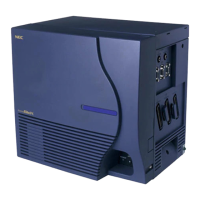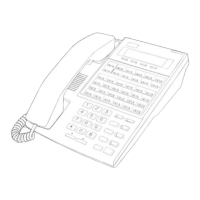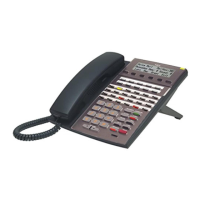Document Revision 1 Electra Elite IPK II
2 - 548 K-CCIS - T1
J
Link Reconnect – K-CCIS
J
Multiple Call Forwarding – All Calls – K-CCIS
J
Multiple Call Forwarding – Busy/No Answer – K-CCIS
J
Paging Access – K-CCIS
J
Quick Transfer to Voice Mail – K-CCIS
J
Station-to-Station Calling – K-CCIS
J
Uniform Numbering Plan – K-CCIS
J
Voice Call – K-CCIS
J
Voice Mail Integration – K-CCIS
Conditions
Each Electra Elite IPK II system can have up to four K-CCIS routes.
One DTI-U( ) ETU can be used to support/connect a maximum of four K-CCIS Links.
The Basic Port Package can have up to 63 DTI trunks for K-CCIS voice path.
The Expanded Port Package can have up to 199 DTI trunks for K-CCIS voice path.
The K-CCIS feature shares the CO/PBX/Tie/DID trunks available for the system.
When assigning a Closed Numbering Plan and DID conversion across K-CCIS is required,
the Electra Elite IPK II uses the ARS/F-Route Tables.
The Electra Elite IPK II uses the F-Route Tables to assign an Open Numbering Plan.
When all K-CCIS voice channels are busy, the Electra Elite IPK II originator of a K-CCIS
call hears a busy tone from the system.
Outgoing CO calls in a K-CCIS network can be routed over the K-CCIS link and use the
distant system CO lines.
Distant system extension numbers in the K-CCIS network can be assigned to Feature
Access or One Touch keys and Speed Dial buffers.
When a K-CCIS trunk is on hold, the Specified Line Seizure access codes can be used to
retrieve the call from its held state.
The Elite ACD Plus can support and distribute incoming calls from a remote K-CCIS office.
However, incoming calls to ACD Plus that result in a link reconnect are not supported.
These calls must first be answered by a local station, then can be transferred to ACD Plus
unless it is an internal (Intercom) call.
The Electra Elite IPK II can support only 2- ~ 8-digit station numbers.

